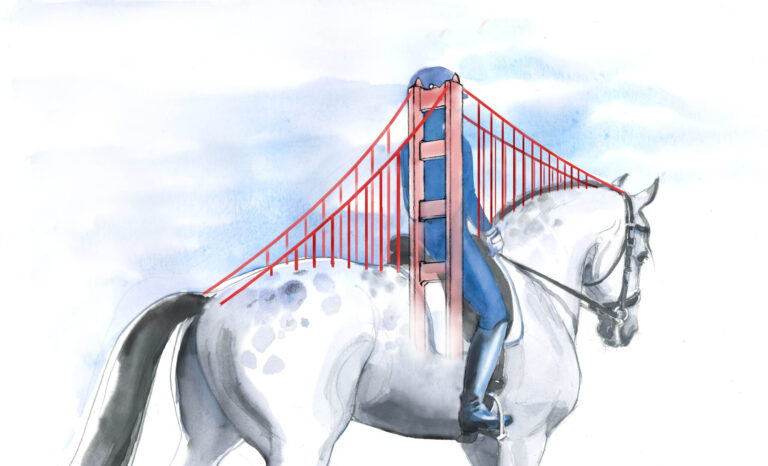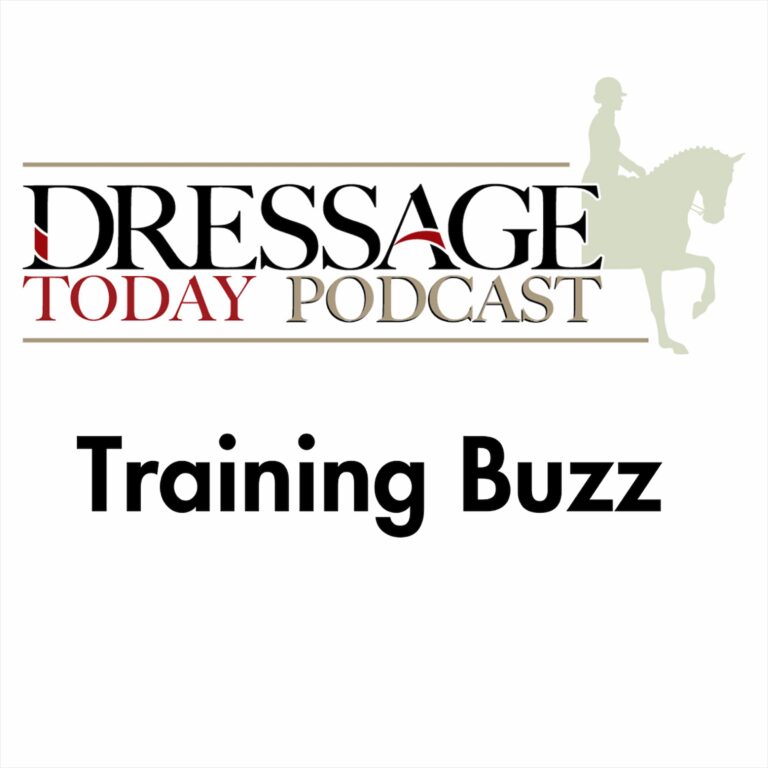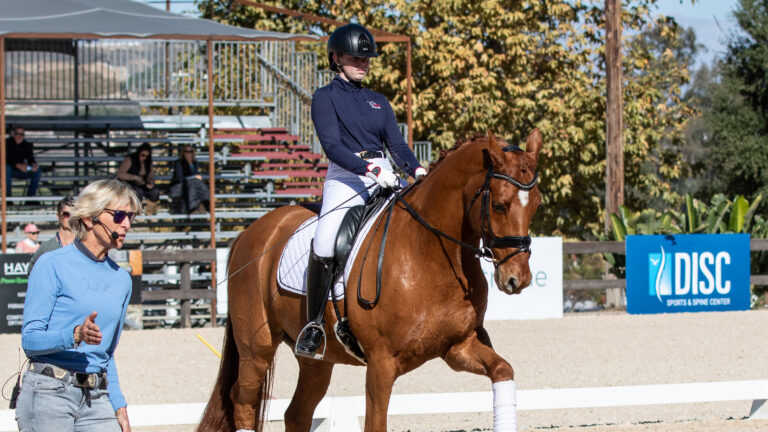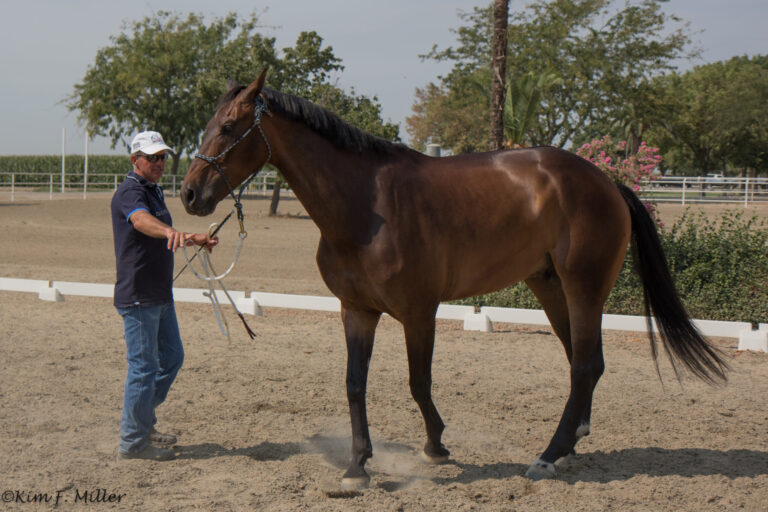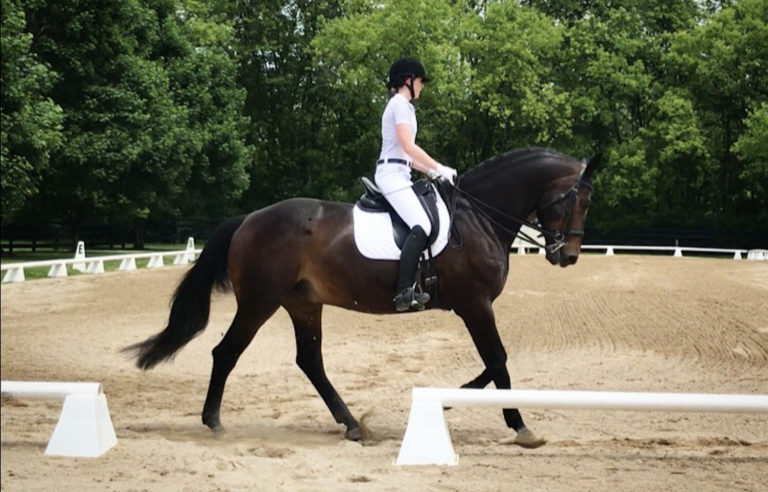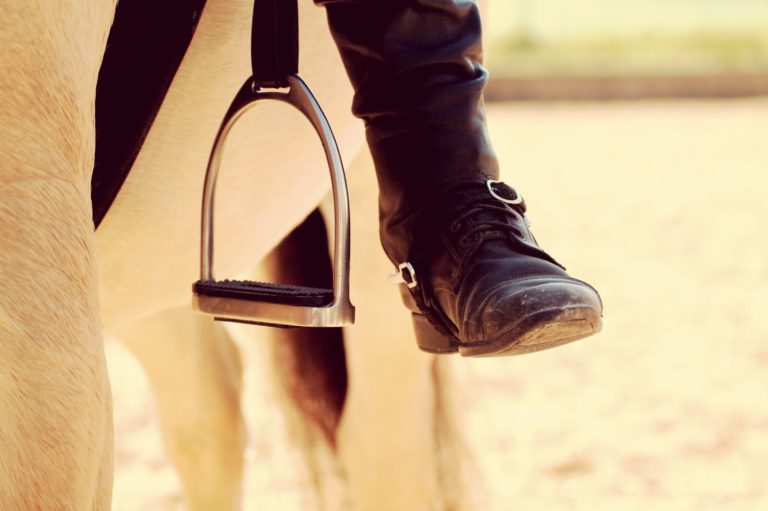In this photo, Amber Hall is riding the 6-year-old Oldenburg gelding Charge My Card at First Level. This picture captures a very nice moment from a photographic standpoint, as the horse’s legs mirror the letter V she is passing. Amber looks highly focused and this picture shows the balance and harmony these two have been able to find during the test. Amber sits centered on top of Charge My Card, who appears equally focused under her.
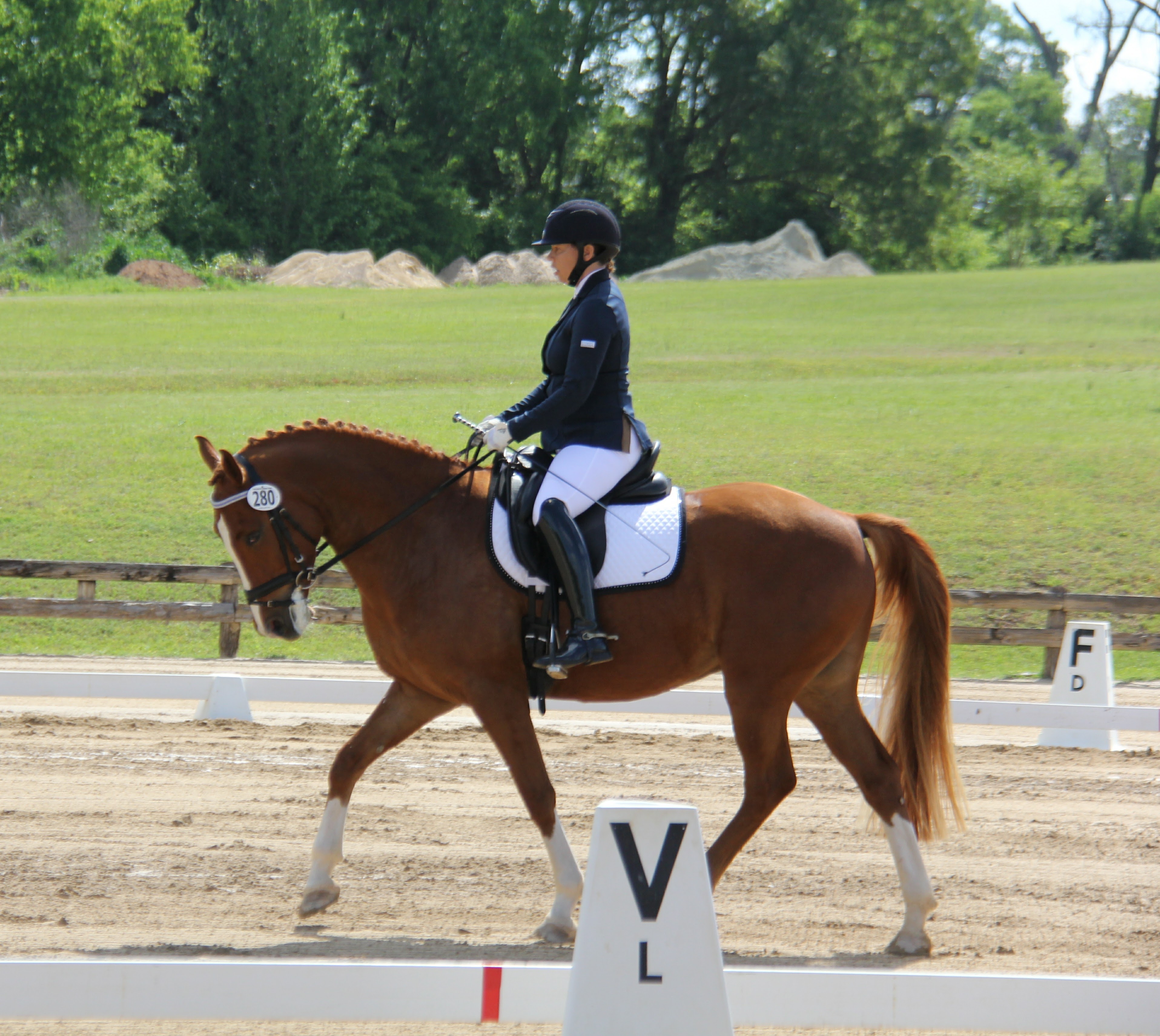
The position of the letter V does not let me see exactly where the horse’s hind leg is landing, but I do get the impression that it is landing just where the marker is placed, and this is a tiny bit behind Amber’s seat. I would love to see Charge My Card’s hind leg step under her seat more. By doing so, he would have an easier time lifting his shoulders and keeping his neck more open with his nose more in front of the vertical.
As I study Amber, I can see the classical alignment we often refer to in dressage. Her ear, shoulder, hip and ankle are aligned and there is a straight line from her elbow to her hand to her horse’s mouth. To be critical, Amber is sitting a bit too much “on top” of her horse, as she has not yet found a deep seat. She seems to ride with a bit more weight in the front of her seat bones.
If you look at an anatomical picture of the pelvis, the seat bones are not a pointed elongation of the seat, but they are more like a sleigh and allow a mobile balance with a constant shift of weight.
I would like Amber to try this: Imagine that your pelvis is hanging in a sling made of two elastic chains. You can try this by placing a towel between your legs and holding it with one hand in the front and with the other hand up along your back. Then you can feel how the pelvis tilts forward when the back hand pulls and the front hand gives, and how the pelvis gets lighter in the front when the front hand pulls up and the back arm stretches longer. Similarly, when you are in the saddle, your abdominal muscle chain can lift your pubic bone up slightly so that you can have more weight on the back of your seat bones without needing to lean your shoulders back.
This very subtle correction can make a big difference in the effectiveness of the seat, especially during transitions. For Amber, it will allow more suppleness in her back and shoulders while encouraging Charge My Card to step farther under her weight, developing more self-carriage and, at the same time, making it easier for him to open his neck and move his nose more forward to the vertical line. I hope this advice will help Amber and her nice horse proceed in their dressage journey.
Susanne von Dietze is a leader in equestrian biomechanics. A physiotherapist, licensed Trainer A instructor and judge for dressage and show jumping, she gives lectures and seminars throughout the world, including at the prestigious German Riding Academy in Warendorf. She is a native of Germany and now lives with her husband and three children in Israel, where she competes at the international level. She is the author of two books on the biomechanics of riding: Balance in Movement and Rider and Horse, Back to Back.


